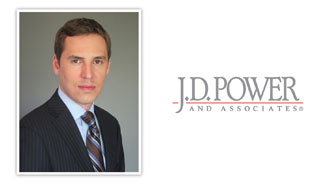J.D. Power: Leasing Dips Slightly in September

Lease penetration may have dipped modestly year-over-year and sequentially during September, but that doesn’t indicate a weak market.
What caused the slight dip in leasing rates, J.D. Power and Associates’ Thomas King told Auto Remarketing, was a combination of two things.
For starters, segments that are more lease-centric saw their market share dip in terms of overall industry sales (including leasing, financing and otherwise). Meanwhile, less lease-centric segments did the opposite.
The second factor that came into play was the model-year transition, which caused “some noise in the marketplace.”
“You do all the math, and you end up with a slight decline month-over-month,” King said Tuesday.
Overall, lease penetration was at 18 percent in September, down from 19.3 percent in August and 18.7 percent in September.
“There were some segment mix shifts which contributed to this, so that was about a half of a point decline. To give you an example, large pickups had a pretty strong month last month, and they only lease at 4 percent (penetration) of sales, whereas something like midsize conventional, they actually lost a little share of the industry, and they lease at 26 percent,” explained King, senior director with J.D. Power.
“If you do more trucks and fewer cars, then inevitably you see the lease mix come down,” he said. “So that really was a function of an industry dynamic separate from being specific to leasing.”
King also delved into the impact of the model-year transition. He pointed out that although leasing penetration for 2011 model-year units fell from 19.5 percent to 17.2 percent month-over-month, leasing actually increased sequentially on model-year 2012 vehicles.
In August, penetration for 2012 models was at 18.7 percent. That rate increased to 19.7 percent in September.
“We’re now in the window where the industry is transitioning from ’11 model years into ’12 model years. What we typically hear is that folks tend to be a little bit less aggressive with the leasing on the older model year just because the residuals will be down,” King noted. “So you start to see them putting the leases on the new-model year at the expense of the old model year.”

 View The Latest Edition
View The Latest Edition

